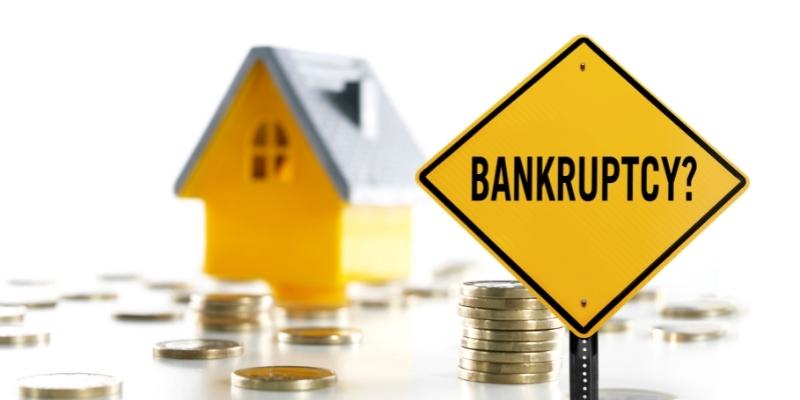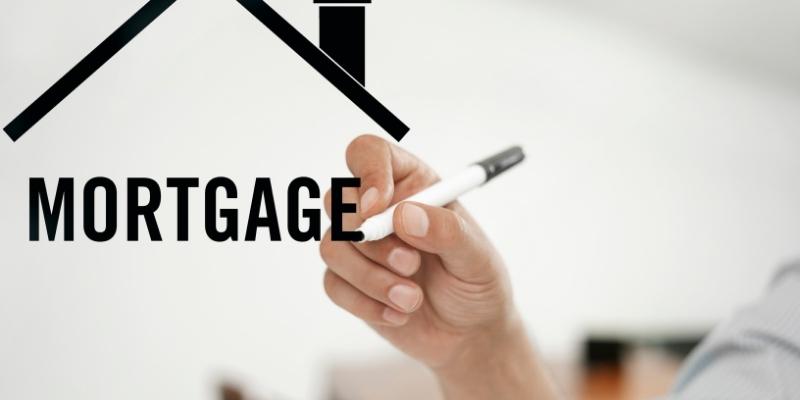How Soon Can I Qualify for a Mortgage After Bankruptcy: A Complete Overview
Oct 24, 2022 By Triston Martin
Any consumer or business that suffers or goes through financial hardships can declare bankruptcy; it's legal and provides debt relief. Still, the consumer or business has to repay the debt by creating an alternating plan or selling assets. The repayment plan is also part of the process, and bankruptcy is considered the final course of action in case of severe financial crisis or hardships.

After anyone goes through bankruptcy, it doesn't mean that any financial institution will never trust or facilitate them; it takes time to settle down things, especially if they went for a mortgage on a house they could able to start their your plan or use the services of any financial institution with a year or so. It all depends on taking a right and positive steps.
Waiting Period for Mortgage:
The waiting period for mortgages after bankruptcy is lenders' way to trust back or make sure that the person or business is worth betting on again. Without reason, bankruptcy is bad for anyone's financial or credit history; however, it can be reverted by properly handling the finances for a period prescribed by different lenders or financial institutions.
The period may differ from one lender to another, but everyone has to cross the first obstacle of the waiting period, called the seasoning period, to start their journey again to own a home. During this period, one has to take serious steps to structure their finances and rebuild their credit. It helps win the lender's trust back and shows that the borrowers can make payments on time.
There are six types; however, we will discuss the most common three types of bankruptcy, chapter 7, chapter 13, and chapter 11. Chapters 13 and 7 almost account for 99.9% of bankruptcy, whereas chapter 11 is rarely used by individuals, and the waiting period for each bankruptcy differs.
Chapter 7 Bankruptcy:
Chapter 7 bankruptcy or liquidation or straight bankruptcy implies that individuals unable to pay their debts due to unavailability of financial resources sell their assets to pay the debt to the creditors. These assets can be cars, household items or furnishings, etc., the chapter 7 bankruptcy allows the individual to take a fresh start by paying all the debts by releasing all assets.
Waiting Period:
For chapter 7 bankruptcy, the waiting period regulated by FHA and VA for bankruptcy discharge is two years; after that period, the court will release an individual from their debts; it usually takes 6-8 months for chapter 7 discharge after filing it. The waiting time required for a USDA loan is three years, and for a conventional loan, the waiting time is four years, and chapter 7 bankruptcy remains on a credit report for 10 years.
Chapter 13 Bankruptcy:
Chapter 13 bankruptcy is used by consumers or individuals with a consistent income source willing to pay their debts. In this bankruptcy, consumers choose the option to pay their debt by entering into a repayment plan and refrain from surrendering or selling any asset.
Waiting Period:
The plan normally constitutes over 4 to 5 years to complete until the debts are discharged. This particular bankruptcy allows you to keep your assets and pay your debts after settling a repayment plan.
The regulations for getting a loan under FHA, VA, or USDA are more complicated than in chapter 7; it takes longer to discharge and remains in your credit history for seven years. An individual has to wait for two years to get an FHA mortgage and requires permission from the person or trustee who oversees their repayment plan and on-time payment proof against the repayment on the bankruptcy plan.
Similarly, the USDA loan requires a waiting period of 12 months with successful payment plans, and for that conventional loan, the waiting period is two years. If the individual fails to follow up on the repayment plan or their chapter 13 case is dismissed, the waiting period comprises four years.
Chapter 11 Bankruptcy:
It's a rarity for an individual to file a chapter 11 bankruptcy; it requires a reorganizational plan usually used by businesses; however, it can be an option for those who make more money to fit into chapter 7 and have way much debt to fall in chapter 13.
Waiting Period:
Once the bankruptcy is discharged, a person can apply for a mortgage, but the bankruptcy process in this chapter is expensive.
Mortgage after Bankruptcy:
Multiple mortgage options are available for consumers after one declares bankruptcy; these options have their own set of regulations and waiting period; however, borrowers can choose from the following lenders whatever plan suits them best.
Conventional Loan Requirements:
Conventional loans mainly follow the guideline from the two main agencies, Fannie Mae and Freddie Mae; usually, mortgages on conventional loans have two types of interest rates; either they can be fixed or adjustable interest rates. The span of these mortgages ranges between 10 to 30 years.
Requirements:
- A waiting period span of two to four years.
- A minimum credit score of 620
- 3% payable as a minimum down payment.
FHA Loan:
The Federal Housing Administration insures these loans, and their lending requirements are comparatively more flexible than conventional loans or mortgages; these mortgages span between 15 to 30 years and come with both fixed and adjustable interest rates. Individuals with chapter 13 bankruptcy need permission from the bankruptcy court to secure a mortgage.
Requirement:
- A waiting period span of one to two years.
- A minimum credit score of 580( 500-579 is acceptable with a 10% down payment).
- 3.5% payable as a minimum down payment.
VA Loan:
Service members, their families, and veterans are allowed to enroll in this program; the US government backs it, and the terms and regulations for bankruptcy loans are lenient in VA home loans.
Requirement:
- A waiting period span of one to two years.
- Typically no minimum credit score requirement (some lenders may ask for a 620 score).
- No minimum down payment requirement.
USDA Loan:
These loans are focused on qualifying rural residents to purchase a home in their areas and are supported by the US Department of Agriculture, and have a fixed interest rate of 30 years. To qualify for this loan borrower's income must not exceed 115% of the median income in that area.
Requirement:
- A waiting period span of two to three years.
- Typically no minimum credit score requirement (some lenders may ask for a 640 score).
- No minimum down payment requirement.
Final Thoughts:
Multiple options are available for anyone who wants to qualify for a mortgage after bankruptcy. Still, one has to decide what bankruptcy option they are opting for and then later choose a mortgage plan. The mortgage after bankruptcy also has its terms and regulations, which must be met.









